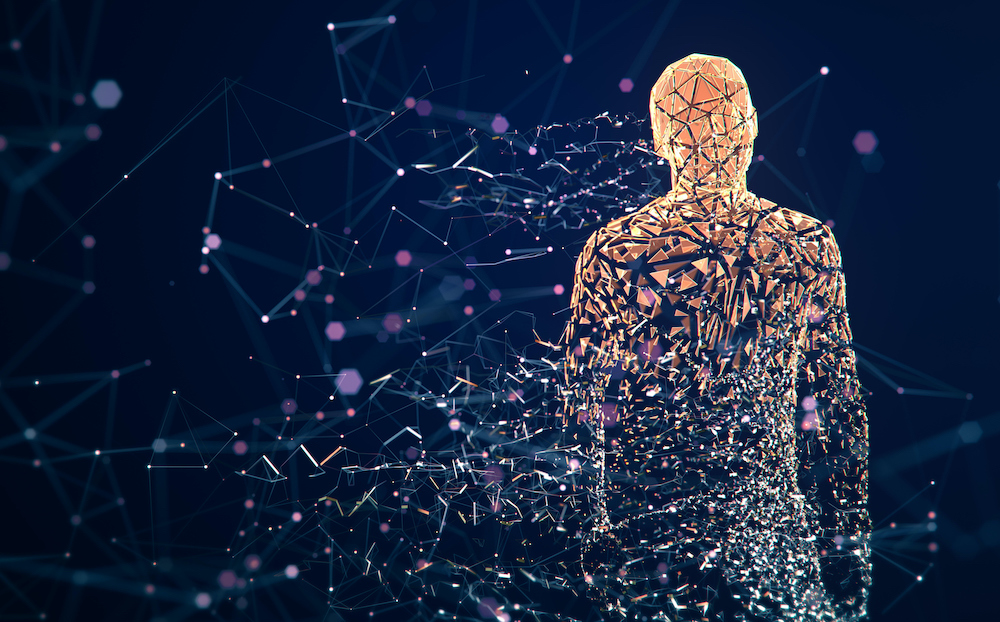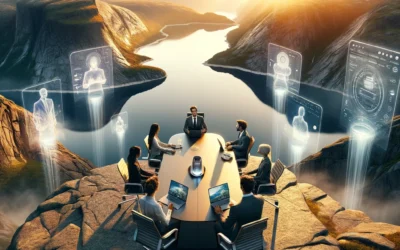Together with exponential technology development, decentralization is a central theme in the post-industrial transition. The Social Distancing Economy created by the pandemic and government lockdowns has accelerated many aspects of decentralization. People are leaving the big cities in search of physical safety, a higher quality of life, and a lower cost of living. It will be a little while before we get real data on how physical relocation and how it will affect housing prices and traffic patterns.
When trust in one’s neighbors and local institutions goes down, people will seek to become more self-reliant. In the United States, gun sales have gone up, and more people are starting to grow food at home. At the beginning of the lockdowns, we also saw hoarding. We used to think the “preppers” were a bit exotic, but now Preppers R Us.
A sheltered (digital) life
Working from home has become the new normal for everyone doing knowledge work. Stanford University economist Dr. Nicholas Bloom reported in a June 29 interview that in the United States, 42% of the labor force was working from home, 26% of workers were working on-premises performing “essential” services, and 33% were not working at all. The job losses have especially impacted “embodied” work[1], where a physical presence is required to do the job. Knowledge work is mobile work, and working from home allows people to relocate without leaving their jobs behind. Embodied workers will be much less mobile, and their jobs are increasingly candidates for automation. We will see a rapidly increasing demand for education and upskilling.
Repetitive knowledge work is also subject to automaton. In our recent online event on the New World of Work, IPSoft’s Amelia illustrated how well an intelligent agent can handle complex requests. Workers will need more education to transition from routine knowledge work to creative knowledge work. In the emerging post-industrial economy, the “creative class” will make up a much higher percentage of the population than it does today.
The lockdowns made homeschooling the new normal for children, and university courses also moved off-campus. The IT infrastructure for the latter was already in place, so the most significant difference for students was that they could no longer be on campus. Many universities will not resume on-campus instruction until 2021, and this may create downward pressure on tuition rates. However, universities will increasingly see the whole world as their market. So will private schools for younger students.
There is a tremendous opportunity for innovation and disruption in the education space, with a wave of new companies utilizing a combination of AI and real-world teachers to accelerate human development across the board. Education will see accelerated decentralization as a result.
Once organizations have transitioned to remote work, they will not go back to using office space in the same way. In a survey report released by employee engagement software provider Quantum Workplace in May, only 4% of employees believed working from home had a significant negative impact on their performance. A whopping 77% reported a positive effect on productivity.
Even before the pandemic, the IT industry had originated a new trend, the Remote-First Workforce. The thinking was that jobs and organizations ought to be designed for remote work from the start. This concept has now spread to virtually all industries.
Remote work cannot save companies relying on embodied work, however. High-profile retail chains declaring bankruptcy during the pandemic include J. Crew, Neiman Marcus, Sage Stores, JC Penney, Tuesday Morning, GNC Holdings, Lucky, Papyrus, and Pier 1 Imports. All are multi-billion dollar companies operating thousands of stores. The pandemic has accelerated the transition from brick and mortar retail to e-commerce.
Other embodied industries have also been affected. Hertz and Advantage Rent A Car have both filed for bankruptcy. 24 Hour Fitness and Gold’s Gym, industry icons both, have also filed. Airlines, hospitality, sports leagues, movie theaters, restaurants, and tourism have all seen an increase in bankruptcy filings. Commercial real estate is suffering the consequences.
Consumers are ready
Consumers have adapted by finding digital alternatives. Personal trainers have begun doing Zoom sessions. Home fitness equipment companies such as Peloton have benefited tremendously. Instead of traveling to visit relatives, people have resorted to video conferencing. Universal Studios announced they would release movies straight to digital. Streaming services like Amazon Prime Video and Netflix have also profited from a captive audience. In every one of these cases, we see decentralization at play.
An emerging trend is what we call Ghost Everything. Mid-tier restaurants had already been converting to Ghost Kitchens before the pandemic. During the lockdown, restaurants that wanted to open had to become Ghost Kitchens. We witnessed restaurants operating with about 10–20% of the staffing and revenue.
Food production will likely also become more automated, and many restaurant chains already support online ordering. The day when we can order take-out on our smartphone and go through a drive-through to pick it up, without any human hands touching, is not far away.
As robotics continues to evolve, our retail experience (when we don’t order for home delivery) is likely to feature more automation and more AIs, not just to reduce operating costs, but also to elevate the shopping experience. We will see Ghost Grocery Stores (Amazon has already eliminated the checkout line), Ghost Museums, and perhaps entire Ghost Malls with a much smaller number of human employees.
Giant shopping malls may be replaced by smaller neighborhood malls that can display and manufacture a vast range of goods based on visitor demand. In addition to robots, Mixed Reality and Intelligent Agents will be an integrated part of this new shopping experience. The neighborhood mall could become a micro-factory, entertainment center, and social venue all in one — a digital version of the old village market, the Agora.
While the transition from the physical to the digital enables decentralization, we still live in a time where most of the goods we purchase are manufactured in a central location. Advances in fields such as 3D printing, atomic precision manufacturing, material science, and machine learning are eating away at this. With decentralization comes the potential for higher capital efficiency and much faster delivery.
..but politicians are stuck in the industrial era
Geopolitics and trade policy also have an impact, however. In the 1990s, lower trade barriers, the Internet, and the specialization of labor helped facilitate the outsourcing of manufacturing. The result was increasing physical centralization. China, in particular, greatly benefitted from this. Now trade barriers are reemerging. Global trust in the Chinese government has suffered due to oppression at home, more assertive regional politics, intervention in Hong Kong, and criticism of its handling of the pandemic. More companies are now moving production out of China to improve supply chain resilience.
Domestic politics also plays a role in decentralization. While the agility that comes from economic freedom is essential to innovation and growth, most people do not understand its importance. Many politicians hold industrial-era assumptions about work and the economy, believing that firms should last a long time, that jobs should be secure, and that people should work in offices. Society, in their view, should be predictable and organized in a top-down fashion.
In California, the AB-5 legislation essentially outlawed freelancing, even though more than 50% of millennials now freelance part-time or full-time. The House of Representatives passed a Federal version of AB-5 in February 2020. If there is a change of leadership in the White House and the Senate, which appears plausible, this new law will likely come into effect. Labor freedom will take a nose-dive in the United States as a result. Many European countries already have similar restrictions.
Legislation such as AB-5 serves to protect the “business model” of politically powerful labor unions. It runs counter to decoupling people from firms, counter to people having the freedom to design their own jobs, and counter to the desire to pursue micro-jobs to finance a hobby, an education, or building a new business. The post-industrial transition may be here technologically, but policymakers are ill-prepared for it.
Distributed Ledgers to the rescue?
Distributed Ledger Technology (DLT) has emerged as a powerful mechanism for decentralization. They will enable tremendous efficiency gains in the coordination between increasingly automated and short-lived micro-organizations. They will also allow us to collaborate more efficiently in large-scale and long-lived trading networks, assets, and projects.
If we are to fulfill the potential of DLTs we must solve a number of challenging problems. Some are technology problems specific to DLTs, such as scalability and security. Blockchain, for instance, is unable to handle a high transaction volume. There have also been several fraud scandals. In 2019 alone, more than $4B was lost due to cryptocurrency theft.
Other problems are what we might call “translation problems” — if we build a DLT-based solution to a business or consumer problem, we have to translate the problem and the solution into the language of DLTs. We refer to this as “crossing the semantic gap,” and it has been the bane of software engineering since the emergence of the software industry in the late 1950s. Translating a legal agreement into a smart contract in a DLT is a good example of a semantic gap challenge. How do we know the smart contract, essentially a workflow, does what we think it does? And how do we know it does the same thing as specified in a legal document?
We also have socio-technical problems. For example, what are the legislative implications of smart contracts? In what ways can we, or should we use cryptocurrency? Policymakers have gone from anxiety about anonymous transactions and banning cryptocurrency to proposing that their governments develop their own. We may also find that industry regulations stand in the way of implementing a brilliant DLT-based business model.
The pandemic has accelerated what could be accelerated, but it has also exposed societal and political dysfunction. The barriers to progress and human flourishing are more visible than ever. Policymakers are faced with an urgent need to restore economic growth, but have unfortunately doubled down on economic planning and government interference in the economy. What we need to become more agile, to innovate and solve our problems, is above all economic freedom.
As a mechanism for decentralization, Distributed Ledgers embody many of the challenges we have discussed here, as well as potential solutions, technological as well as societal.










